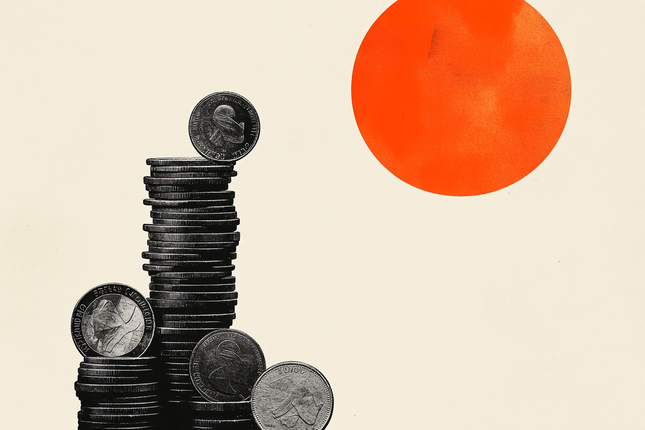Global stock indices suffered a shocking start to 2022. After rallying in more or less a straight line for twenty months following the pandemic low of March 2020, cracks began to appear in the major financial markets. In November 2021, the tech heavy NASADAQ 100 stalled after hitting a succession of record highs. The S&P 500 managed to register several fresh highs before topping out in early January this year. Since then, it’s been nothing but misery for the bulls. By mid-May, the NASDAQ and S&P 500 were down 31% and 20% respectively from their record highs. This was enough for market commentators to start shouting about US equites being in ‘bear market’ territory. But what does that mean? And more importantly, does knowing we’re in a bear market help with your trading?
What is it?
First, a definition. According to Investopedia, a bear market: ‘…typically describes a condition in which securities prices fall 20% or more from recent highs amid widespread pessimism and negative investor sentiment’. OK, so now we know. If a security loses a fifth of its value, it is ‘officially’ in a bear market. I’m not sure where the 20% comes from. But it represents a significant loss, so let’s go with it. But as Investopedia also states, and as most commentators overlook, a bear market isn’t just about a loss of 20%. A bear market decline should be ‘prolonged’ and ‘amid widespread pessimism’. There’s little doubt that investor sentiment will be negative if the value of a market is reduced by a fifth. But what about the duration of the decline? Back in March 2020, stock markets slumped as the pandemic took hold. The NASDAQ fell 31% while the S&P 500 lost 35%. The loudest voices were screaming that we were in a bear market, and markets had further to fall. Anyone who disagreed was roundly mocked. But those losses marked the bottom of a sell-off which lasted just one month. Sure, the slump was traumatic and frightening, but within three months the NASDAQ had recovered all off its losses and went on to hit a fresh record high. Two months later, the S&P 500 had done the same. As far as the percentage falls were concerned, both the S&P 500 and NASDAQ hit bear market territory in around three weeks after the sell-off began. Two weeks later, the bottom was in.
This time it’s different
This is where the current sell-off differs from 2020. While the S&P only briefly dipped into bear market territory in percentage terms, the NASDAQ is still more than 20% lower than its November high. So, conflicting signals. In addition, this decline has been going on for over six months now. And while both the S&P 500 and NASDAQ have bounced off recent lows, there’s still a possibility that the selling could resume. Could it be that we’re in for something more protracted? Let’s look at two other notable bear markets. The beginning of this century saw the Dotcom crash. The S&P 500 lost half of its value. But it didn’t happen overnight. It took over two and a half years between March 2000 and October 2002, of grinding lower with every rally eventually fading out on a raft of selling. Then, the Great Financial Crisis saw the S&P lose 58% over a period of seventeen months, October 2007 to March 2009. Again, this was a dispiriting time for those investors who saw value in beaten-down stocks but were persuaded not to buy due to overwhelming negative sentiment. Could this be what we’re experiencing now? Bear in mind, we’ve been in a bull market ever since the S&P 500 hit its low of 666 in March 2009. There have been some setbacks along the way, most significantly the 20% sell-off in the S&P between September and December 2018. But aside from that, the biggest correction until now was the pandemic
Psychological
A 20% sell-off in a financial market is just one factor of a bear market. It’s both a symbol and a psychological hurdle for investors. Sure, at 20% down sentiment is negative. That’s why bear markets often accompany general economic downturns and recessions. As we know, we had a whiff of a recession indicator earlier this year when parts of the US Treasury yield curve inverted. It was so brief as to be meaningless, but it has put recession fears on the menu, and these are adding to negative sentiment. But the market sentiment around the Dotcom crash and the Great Financial Crisis was really ‘End of Days’ stuff. With the former, billions of investment dollars evaporated into thin air over a protracted period, on a revaluing of internet start-ups. With the latter, the world was on the brink of a total banking collapse. More recently, consider the genuine fear and uncertainty as the pandemic took hold. A horrible disease with no vaccine, and global health services on the verge of collapse. Governments around the world responded by shutting down huge swathes of the economy. Is that how things are now, as central bankers attempt to normalise monetary policy and reduce stimulus? Sure, the outlook is concerning, and we’d be daft to put our trust in policymakers and central bankers to engineer a soft landing or navigate a risk-free future. But that doesn’t mean we’re on course for a protracted bear market. Yet. We could be. After all, stock markets crash, and when they do the world will be in an even more worrying place than it is now. But it’s also possible that we’re currently experiencing a prolonged correction within a bull market that has further to run. If so, when every bear has turned bullish, it will be time to get out.
Financial spread trading comes with a high risk of losing money rapidly due to leverage. You should consider whether you can afford to take the high risk of losing your money.
Editors’ Picks

EUR/USD Price Annual Forecast: Growth to displace central banks from the limelight in 2026 Premium
What a year! Donald Trump’s return to the United States (US) Presidency was no doubt what led financial markets throughout 2025. His not-always-unexpected or surprising decisions shaped investors’ sentiment, or better said, unprecedented uncertainty.

US Dollar Price Annual Forecast: 2026 set to be a year of transition, not capitulation Premium
The US Dollar (USD) enters the new year at a crossroads. After several years of sustained strength driven by US growth outperformance, aggressive Federal Reserve (Fed) tightening, and recurrent episodes of global risk aversion, the conditions that underpinned broad-based USD appreciation are beginning to erode, but not collapse.

GBP/USD Price Annual Forecast: Will 2026 be another bullish year for Pound Sterling? Premium
Having wrapped up 2025 on a positive note, the Pound Sterling (GBP) eyes another meaningful and upbeat year against the US Dollar (USD) at the start of 2026.

Gold Price Annual Forecast: 2026 could see new record-highs but a 2025-like rally is unlikely Premium
Gold hit multiple new record highs throughout 2025. Trade-war fears, geopolitical instability and monetary easing in major economies were the main drivers behind Gold’s rally.

Top 10 crypto predictions for 2026: Institutional demand and big banks could lift Bitcoin
Bitcoin’s (BTC) adoption story is unraveling and the king crypto could see institutional demand return in 2026. Crypto asset managers like Grayscale are betting on Bitcoin’s rally to a new all-time high next year, and themes like Bitcoin as a reserve asset are emerging.
RECOMMENDED LESSONS
Making money in forex is easy if you know how the bankers trade!
I’m often mystified in my educational forex articles why so many traders struggle to make consistent money out of forex trading. The answer has more to do with what they don’t know than what they do know. After working in investment banks for 20 years many of which were as a Chief trader its second knowledge how to extract cash out of the market.
5 Forex News Events You Need To Know
In the fast moving world of currency markets where huge moves can seemingly come from nowhere, it is extremely important for new traders to learn about the various economic indicators and forex news events and releases that shape the markets. Indeed, quickly getting a handle on which data to look out for, what it means, and how to trade it can see new traders quickly become far more profitable and sets up the road to long term success.
Top 10 Chart Patterns Every Trader Should Know
Chart patterns are one of the most effective trading tools for a trader. They are pure price-action, and form on the basis of underlying buying and selling pressure. Chart patterns have a proven track-record, and traders use them to identify continuation or reversal signals, to open positions and identify price targets.
7 Ways to Avoid Forex Scams
The forex industry is recently seeing more and more scams. Here are 7 ways to avoid losing your money in such scams: Forex scams are becoming frequent. Michael Greenberg reports on luxurious expenses, including a submarine bought from the money taken from forex traders. Here’s another report of a forex fraud. So, how can we avoid falling in such forex scams?
What Are the 10 Fatal Mistakes Traders Make
Trading is exciting. Trading is hard. Trading is extremely hard. Some say that it takes more than 10,000 hours to master. Others believe that trading is the way to quick riches. They might be both wrong. What is important to know that no matter how experienced you are, mistakes will be part of the trading process.
The challenge: Timing the market and trader psychology
Successful trading often comes down to timing – entering and exiting trades at the right moments. Yet timing the market is notoriously difficult, largely because human psychology can derail even the best plans. Two powerful emotions in particular – fear and greed – tend to drive trading decisions off course.


